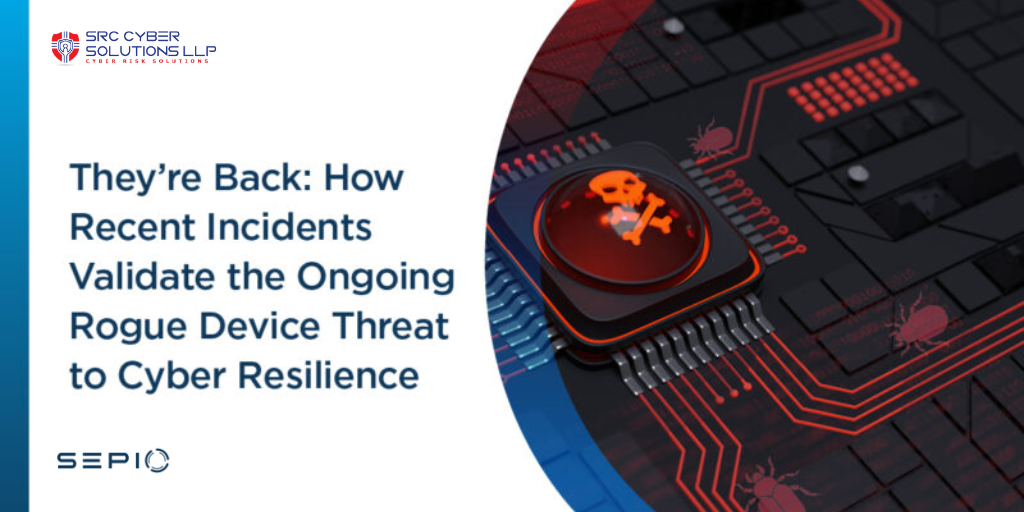How Recent Incidents Validate the Ongoing Rogue DeviceThreat to cyber Resilence

In today’s ever-evolving corporate landscape, interconnectedness reigns supreme. The integration of IT, OT, and IoT domains has transformed traditional tools like laptops and smartphones into indispensable assets, while OT devices have become critical components of corporate networks. Simultaneously, the rise of IoT devices has fueled automation and efficiency, revolutionizing modern workplaces. However, alongside this digital transformation comes a multitude of security challenges, turning the path to progress into a treacherous minefield for enterprises to navigate. Within this intricate web of interconnectedness, the threat of rogue devices infiltrating your corporate systems looms larger than ever before. These insidious intruders can originate from malicious insiders, unsuspecting employees or guests, or even external attackers. Once these unauthorized devices breach your network, they become conduits for cyber attackers to gain unlawful access, exfiltrate sensitive data, or launch devastating cyberattacks.
Updated evidence for hardware-based attacks
Despite premature claims of this threat’s demise, real-life recent examples paint a stark reality. Consider the May 2023 cyberattack on Brazil’s National Institute of Social Security, where cybercriminals skillfully exploited insider access to introduce what investigators dubbed “electronic devices” into the network. The consequences for the organization were dire: a staggering loss of R 1 billion (approximately USD $200M), compromised system access, and the surrender of crucial server data and passwords to the attackers, with potential repercussions extending far beyond. These unfortunate events could have been averted with the comprehensive capabilities of Sepio’s cutting-edge asset risk management platform.
Still skeptical? Recall the Triton attack on Saudi ARAMCO in 2017, the audacious hacking of U.S. defense contractors and NASA JPL in 2018, or the cyber assault on an undisclosed European aerospace company in 2019. Each of these breaches stemmed from the infiltration of rogue devices into IT, OT, and IoT networks, resulting in staggering financial losses totaling tens of millions of dollars. Such catastrophic consequences could have been mitigated with the proactive adoption of Sepio’s innovative solution.
Why Sepio?
Embrace the future of cybersecurity with Sepio. Our advanced platform empowers your enterprise with unparalleled asset visibility across IT, OT, IoT, and peripheral assets. Uncover hidden threats, ensure compliance, and effectively manage asset risk to fortify your digital ecosystem. Leveraging the power of our unique Asset DNA attributes, which transcend traditional identifiers, such as VID/PID, IP addresses, or MAC addresses, you gain unmatched precision in asset surface visibility.
With Sepio’s Asset DNA-based granular controls, establish multi-layered governance across all connected devices. Tailor your asset risk posture based on relevant business and technical factors, adapting to the dynamic cybersecurity landscape. Our platform’s physical layer-based Asset DNA properties enable you to define specific conditions for every facet of your organization, effectively eliminating the possibility of rogue and unauthorized devices slipping through undetected. Furthermore, our predefined responsive actions empower you to swiftly counteract potential threats. Only approved devices gain access to your network, while any anomalous activity is instantaneously identified and resolved. Unleash the power of Sepio’s advanced asset risk management solution and fulfill your critical cybersecurity “jobs to be done”: Protect your digital ecosystem, fortify your enterprise, and embrace resilience in the face of evolving threats.

